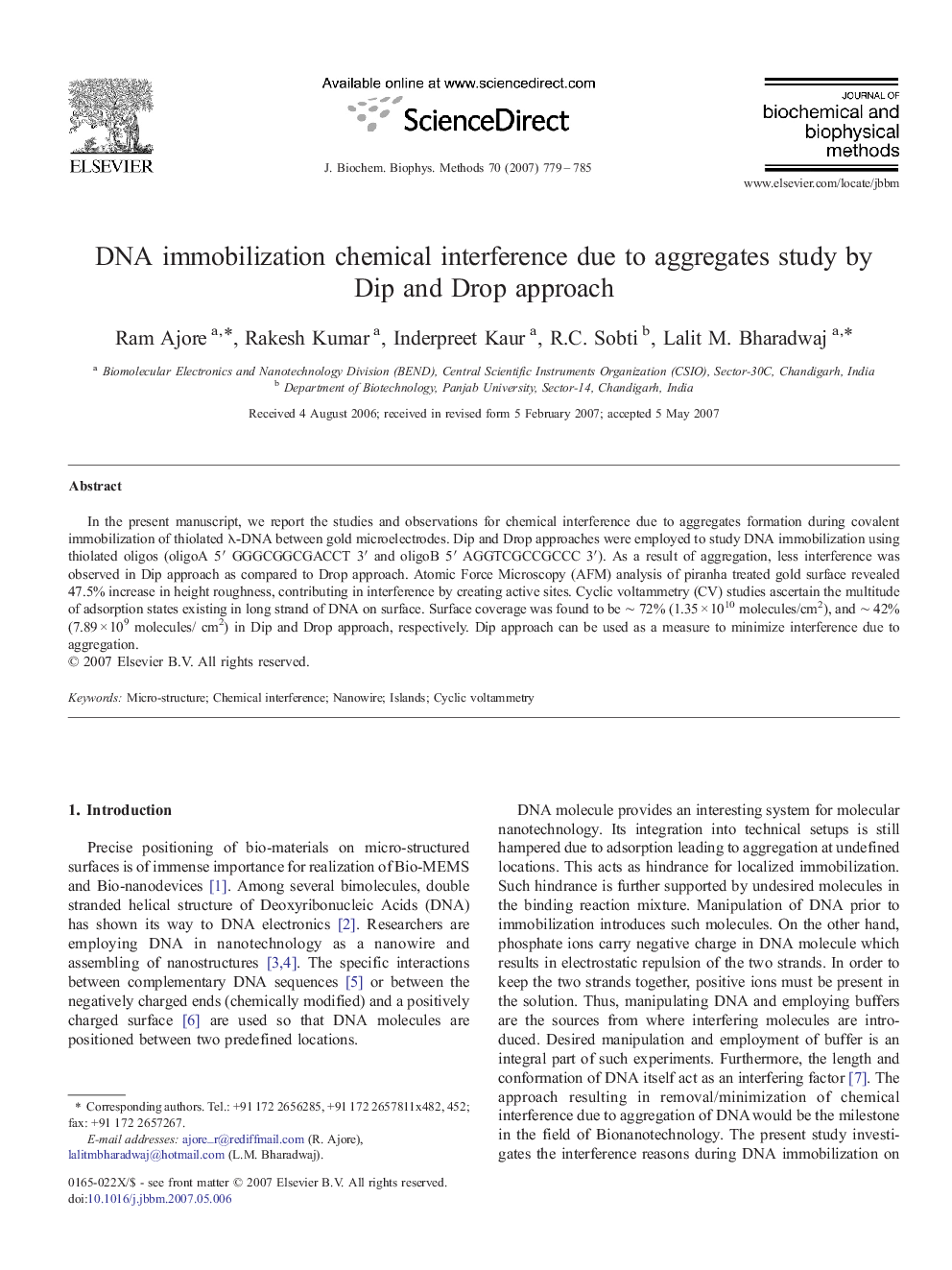| Article ID | Journal | Published Year | Pages | File Type |
|---|---|---|---|---|
| 1988446 | Journal of Biochemical and Biophysical Methods | 2007 | 7 Pages |
In the present manuscript, we report the studies and observations for chemical interference due to aggregates formation during covalent immobilization of thiolated λ-DNA between gold microelectrodes. Dip and Drop approaches were employed to study DNA immobilization using thiolated oligos (oligoA 5′ GGGCGGCGACCT 3′ and oligoB 5′ AGGTCGCCGCCC 3′). As a result of aggregation, less interference was observed in Dip approach as compared to Drop approach. Atomic Force Microscopy (AFM) analysis of piranha treated gold surface revealed 47.5% increase in height roughness, contributing in interference by creating active sites. Cyclic voltammetry (CV) studies ascertain the multitude of adsorption states existing in long strand of DNA on surface. Surface coverage was found to be ∼ 72% (1.35 × 1010 molecules/cm2), and ∼ 42% (7.89 × 109 molecules/ cm2) in Dip and Drop approach, respectively. Dip approach can be used as a measure to minimize interference due to aggregation.
